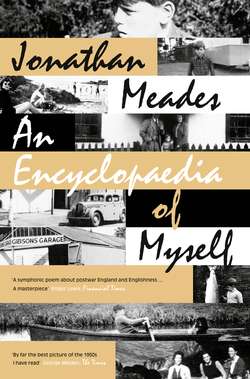Читать книгу An Encyclopaedia of Myself - Jonathan Meades, Jonathan Meades - Страница 13
BLUE SPOT
ОглавлениеWhen my father carried me high on his shoulders grasping my ankles in his giant’s hands I would caress a circular blemish on the top of his head, a birthmark made visible by baldness. (He had already lost most of his hair by the time he married at the age of thirty.) This fascinating spot, the circumference of a cigarette, was approximately the colour of the penicillium mould in blue cheese. Prying in some long-lost book I had been frightened by a Medusa’s head in what I could not then identify as the brothelish style of Rops or Moreau, whose paintings, like all others, I accepted with a dogged literality. My father called Gorgonzola ‘gorgon’, thus conflating in my mind the worms that were rumoured to seethe through the all too living lactate with a Gorgon’s venomously vermicular hairdo. It was this homophone which made me shun the stuff. Besides, I preferred the saltier, less rich Danish Blue, which my father took a dim view of because it didn’t taste of cow. At Christmas there would appear a stoneware crock of Stilton festering in grocer’s port, a sludge as repulsively pungent as an adult’s stool. Mercifully this cheese which, macerated or not, I have never appreciated, was in those days a seasonal ‘treat’ and so unglimpsed and unsmelled throughout the rest of the year. That was not the case with Cheddar, always called ‘mousetrap’. Salisbury’s best grocery, the coffee-and-bacon-scented Robert Stokes, stocked wheels of farm Cheddar, a rarity, for the majority of prewar producers now sold their milk to factory-dairies such as Cow & Gate in Wincanton or Horlicks in Ilminster which processed it into lumps of generic cheese-style product. That was the future: industrial food, rational food, soon to be plastic-wrapped food. It was a future which my parents scornfully opposed whilst I succumbed, shamefully, to Primula, Dairylea triangles, citric Philadelphia, Huntley and Palmers cheese footballs which tickled mucous membrane, Roka cheese crispies in their recyclable blue and yellow tin (pencils, dividers, erasers etc.). I knew I shouldn’t enjoy such foods: I was so advised often enough. I longed to leave childhood taste behind me but it wouldn’t leave me. Even at the age of seventeen I would be excited by Golden Wonder cheese and onion crisps, the first flavoured crisps manufactured, the first flavoured crisps I ate, in that sweetest of all summers, 1964.
At least this litany of vintage lactic colour did not include Kraft cheese slices, tan leatherette rectangles whose textural bounce and astonishing flavour were tours de force of chemical engineering. However, they did not appeal to me. Nor does it include Cracker Barrel ‘Cheddar’ – oblong, granular, fudge-like, a stinging palatal assault which my father would probably have dismissed had it not been advertised on telly by James Robertson Justice, who like Jimmy Edwards and Stinker Murdoch, was generally (and maybe erroneously) accepted to be a jolly good chap rather than a mere actor; bluff, beery, down to earth. He was occasionally to be seen in Salisbury hauling his big-boned beardie bulk from a gull-wing Mercedes.
The Cracker Barrel commercials were directed by Lindsay Anderson. Another cause, then, of his gnawing self-despisal.
